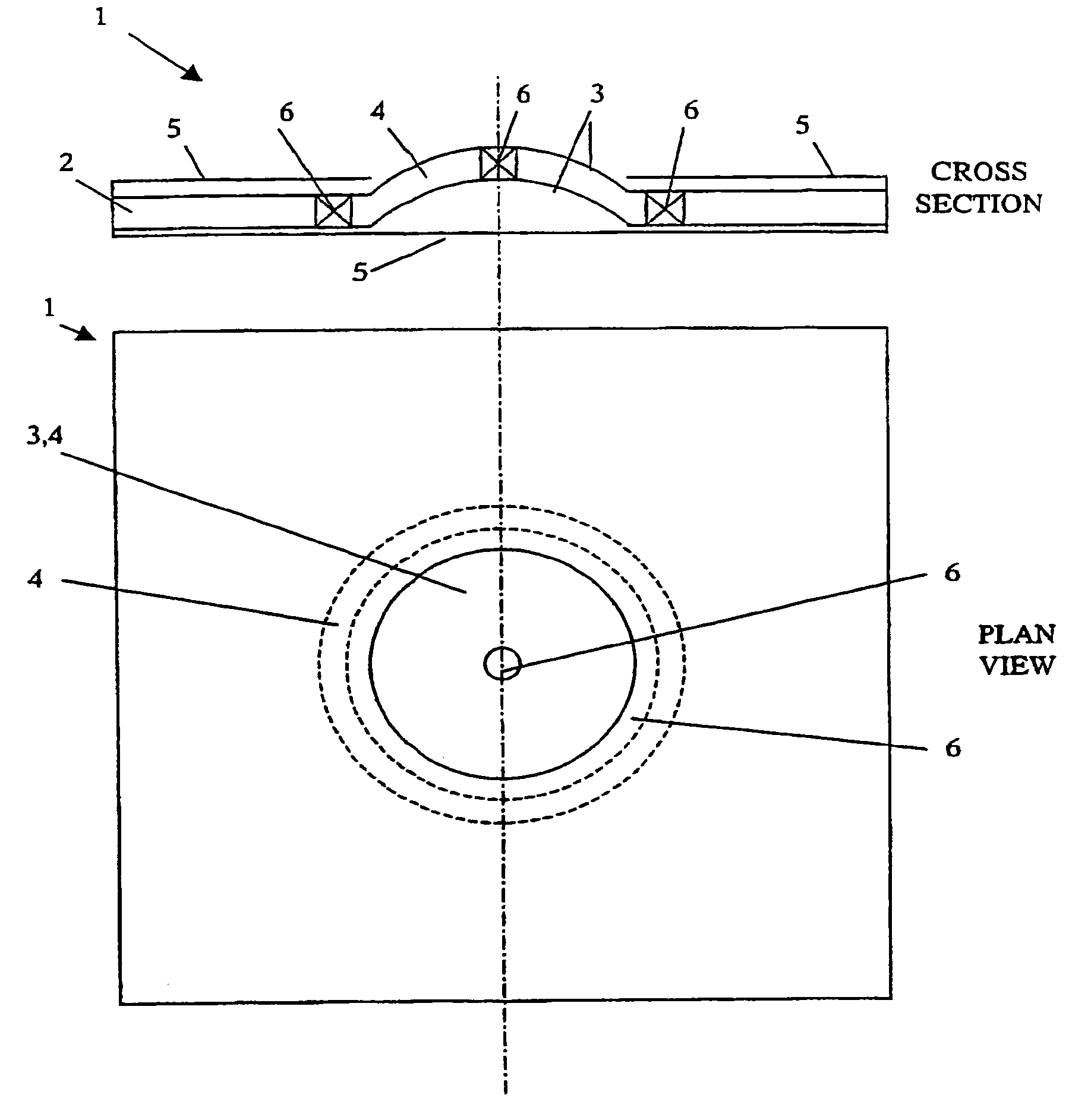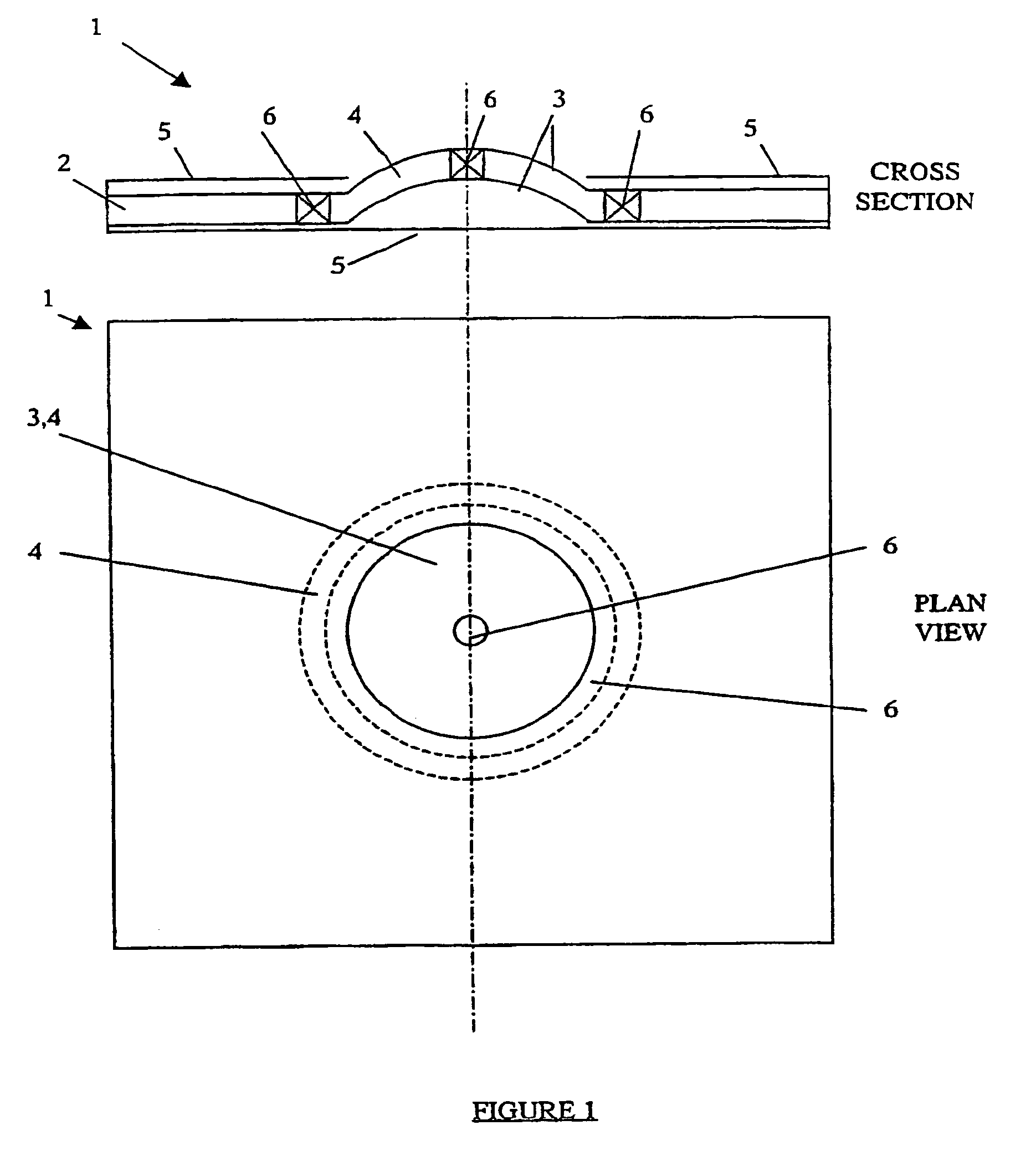Thermal history indicators
- Summary
- Abstract
- Description
- Claims
- Application Information
AI Technical Summary
Benefits of technology
Problems solved by technology
Method used
Image
Examples
example 1
[0101]To 1 g of oleic acid at room temperature (where it is a liquid), 10 mg of patent blue was added. The dye was dispersed by thorough mixing whereupon the particles are dispersed throughout the lipid. Shapes and letters were drawn and written onto frozen sausages, frozen burgers and egg shells for eggs previously stored in a refrigerator. The mixture rapidly solidifies on the surface and can be happily stored in the freezer (meat) or refrigerator (egg) without any change. However, upon defrosting, the lipid melts and the image is lost. In addition, the food dye stains the meat (blue) indicating that it has defrosted. It has to be noted that this is a natural event when the food is legitimately defrosted for food use, and the food can be eaten as normal.
[0102]For foods that are refrigerated, the rice paper disc approach is most appropriate and can successfully indicate a temperature transition. Using the same lipid and dye, the defrosting of burgers has been successfully monitored...
example 2
[0103]Discs of rice paper were soaked in oleic acid and the excess lipid was drained away. The discs were cooled to 5° C. To the surface of this phase, shapes (or lettering) of oleic acid containing patent blue (as above) were applied. Many technologies can be used for this purpose, e.g. painting, stamping, spraying, ink jet printing. The discs were cooled and then placed on the surface of sausages and burgers within the refrigerator. Nothing happens until the meat products are removed from the cool environment, whereupon the lipid melts and a permanent record of the thermal exposure is obvious.
example 3
[0104]Commercial triglycerides were obtained from a number of suppliers. Two products, one with a peak melting temperature (established by differential scanning calorimetry) of ˜65° C. and another with a peak melting temperature of ˜74° C. were applied to food products including sausages. Application was achieved in three ways:
[0105]By dissolving in solvent (especially hexane) and applying the solution in a form of a shape to the surface of the sausage. Reactants like dyes were also applied to the sausage surface in this way, where they were immobilised in the lipid. The sausages were heated at different temperatures and the core temperature was monitored with respect to melting of the surface lipid layer. Colony counts of surface and core microorganisms were also made as a function of the cooking time. These data are presented in the following tables:
[0106]
TABLE 17Average core temperature of collagen casedsausages cooked at 100° C. for up to 1.20 hours in aconvection ovenAverage co...
PUM
 Login to view more
Login to view more Abstract
Description
Claims
Application Information
 Login to view more
Login to view more - R&D Engineer
- R&D Manager
- IP Professional
- Industry Leading Data Capabilities
- Powerful AI technology
- Patent DNA Extraction
Browse by: Latest US Patents, China's latest patents, Technical Efficacy Thesaurus, Application Domain, Technology Topic.
© 2024 PatSnap. All rights reserved.Legal|Privacy policy|Modern Slavery Act Transparency Statement|Sitemap



